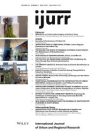Housing nationalization as a solution to urban inequalities has a long history in European social thought. This article describes housing nationalization in a state‐socialist context. Using a political economy perspective and relying on recently released archival material about housing in 1950s Romania, I argue that nationalization may be regarded as a special type of urban process. Nationalization raised the occupancy rate and intensified the usage of existing housing, desegregated centrally located neighborhoods, turned some residential space into office space for state institutions, facilitated the degradation of the existing housing stock and gradually produced a socialist gentry. Aside from similarities with other state‐socialist nationalizations from the same period, Romanian nationalization resembled the housing policies of other statist regimes. The data also suggest that, even in the context of revolutionary change, the state is a sum of multiple, often diverging projects, rather than a coherent actor.
Details
Written by:
LIVIU CHELCEA
Digital Object Identifier (DOI)
10.1111/j.1468-2427.2011.01049.x
About DOI
Read full article as PDF
Read full article as HTML
See the references for this article
